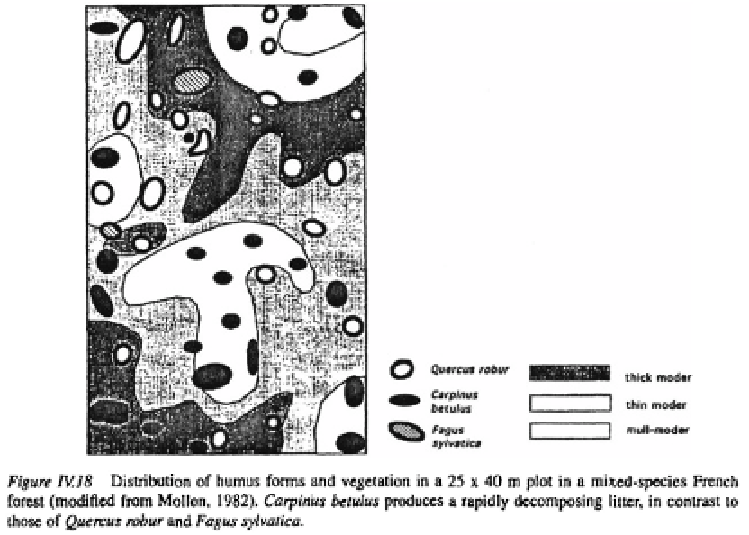Agriculture Reference
In-Depth Information
rather than moder system. Large time lags (10-30 years) may occur between vegetation
change and the responses of the humus type and decomposer communities; the lengths
of such lags also vary with climatic conditions (Bernier and Ponge‚ 1994).
Quantification of the different structural elements found in thin sections of the litter
layers can give important information on the dynamics of decomposition. In moder and
mor litters‚ successions of past vegetation types may be detected. Fern litter is deposited
at specific seasons and may serve to mark the ages of the annual layers (Ponge‚ 1985).
In Alaska‚ for example‚ Wagener and Anderson (unpublished data) noted that two
litter layers are deposited each year: one of Spruce (
Picea sp.
) needles that fall during
the growing season and another that forms when a thick cover of snow weighs the aerial
parts of dead ferns to the ground. Thus‚ by counting the overlying layers of ferns‚ the age
of materials found at different depths can be estimated.
Eco-units
Eco-units (Oldeman‚ 1990) are t h e component units of a forest mosaic defined by
their ages (that is‚ the time passed since the last major disturbance such as a forest fire
or the formation of a gap from which regeneration and growth started) and architecture.
In a natural alpine forest‚ at 1550 m above sea level‚ Bernier and Ponge (1994)
distinguished 9 different eco-units: grass vegetation‚ Spruce (
Picea abies
) stands of
30‚ 55‚ 60‚ 160 and 190 years‚ a Larch (
Larix decidua
) stand (215 years)‚ moss and
Oxalis acetosella
vegetation and Bilberry (
Vaccinium myrtillus
) heath.

